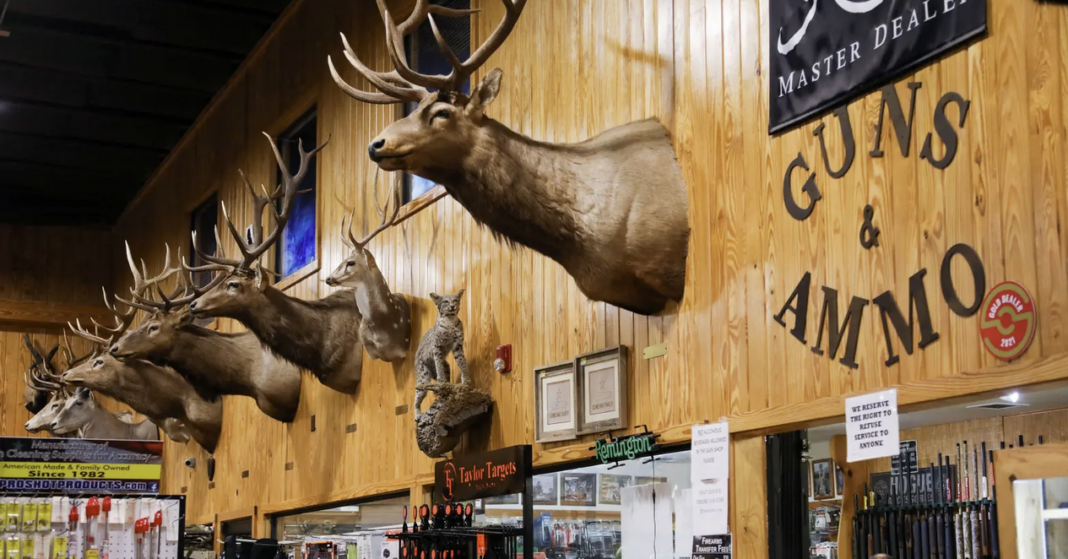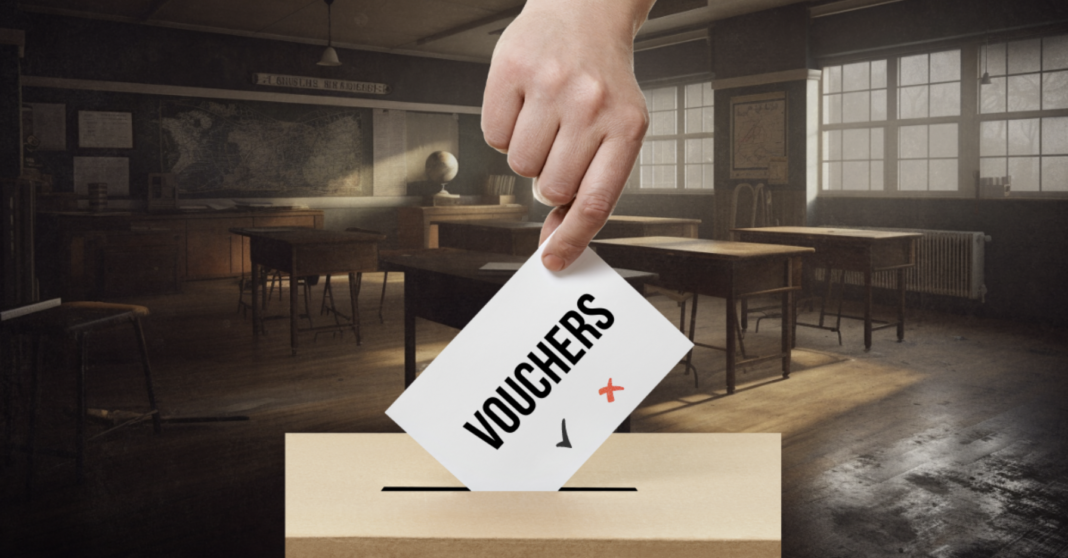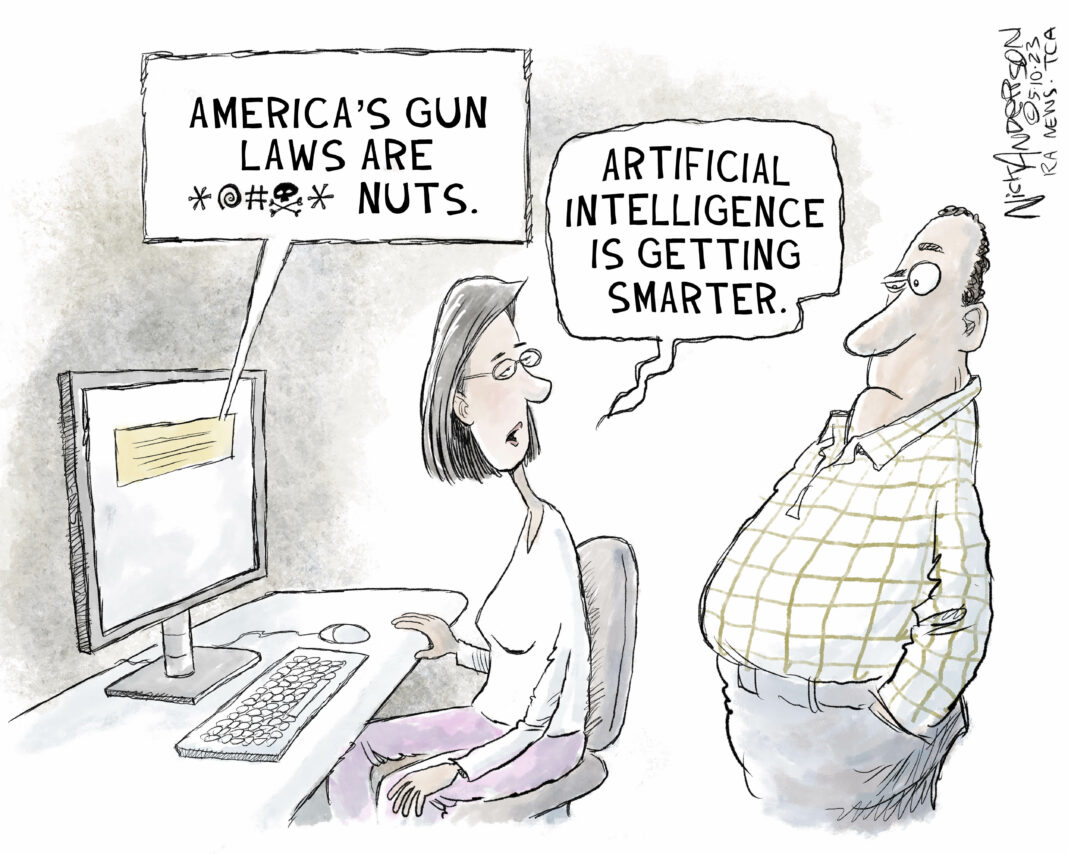Deaths from firearms in Texas — the vast majority of them suicides or homicides — have continued rising in Texas, reaching levels not seen in almost three decades.
At the same time, Texas relaxed its gun laws in a decadeslong push to expand Second Amendment rights in the state, most recently in 2021 when Gov. Greg Abbott signed what Republicans called a “constitutional carry” bill into law, allowing Texans to carry handguns without a license or training.
Texas lawmakers have approved more than 100 bills that loosened regulations on firearms over the last two decades, from blocking campus “zero tolerance” policies that expelled gun-carrying students to preventing hotels from restricting handguns, according to data compiled by ProPublica and The Texas Tribune.
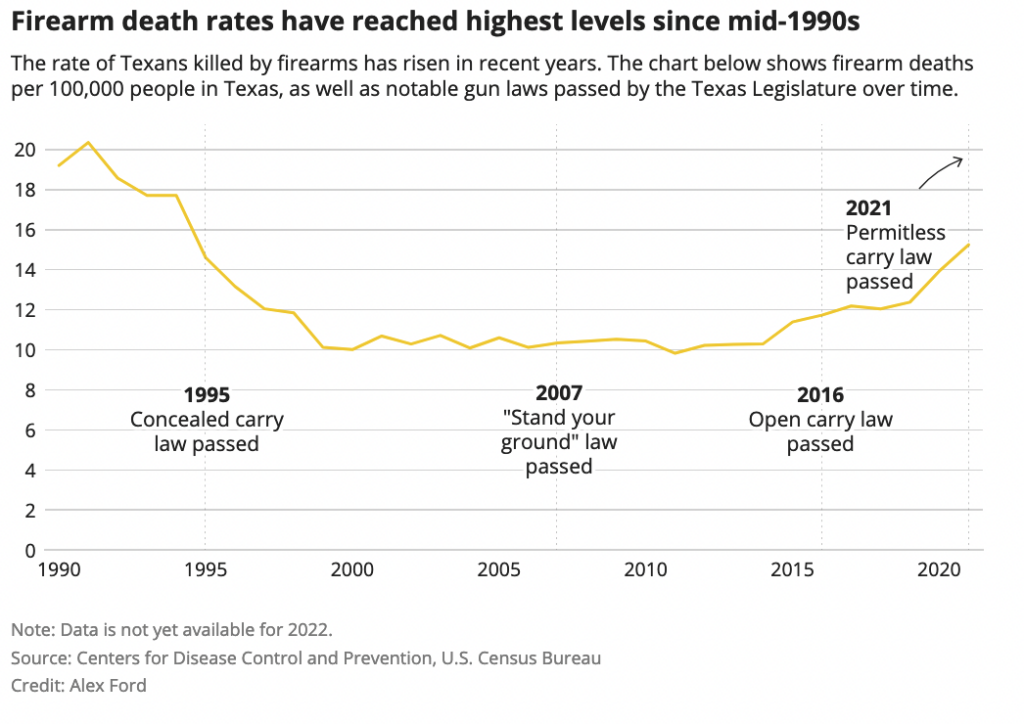
U.S. Centers for Disease Control and Prevention data shows that deaths from firearms in Texas generally began to increase about two decades ago after a dramatic decline in the 1990s. There were 15 deaths by firearms per 100,000 people in Texas in 2021, a 50% jump from 1999 when there were on average 10 deaths by firearms per 100,000 people. Over the same period, firearm-related homicides rose 66% and suicides involving firearms rose 40%.
The last time Texas’ firearm death rate — including suicides, homicides and accidents — exceeded 15 per 100,000 people was in 1994.
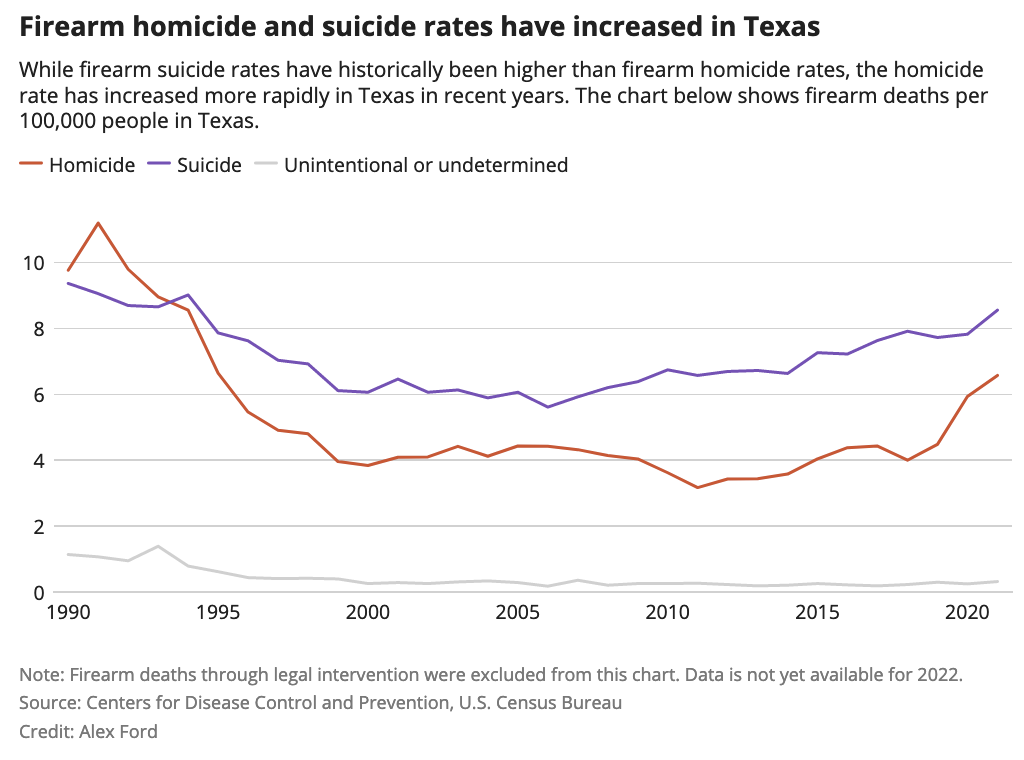
The debate over gun violence — and how to prevent it — has erupted again this week after another Texas mass shooting: A gunman with an AR-15-style rifle killed eight weekend shoppers at an outlet mall in the Dallas suburb of Allen and wounded seven others before police shot him to death. The shooting happened just weeks before the one-year anniversary of the mass shooting at a Uvalde elementary school that left 19 children and two teachers dead.
Legal experts and researchers said it can be difficult to untangle how much gun violence can be attributed to easing gun regulations. The internet has made it easier to obtain weapons, particularly illegal ones. The COVID-19 pandemic brought massive social upheaval that prompted a rise in violence in general, including gun violence. And a rise in distrust of institutions, from the media to the government, also plays a role, experts said.
Texas Republicans have argued that eliminating regulations on firearms is compelled by a conservative reading of the U.S. Constitution — and necessary to protect the rights of Texas citizens. When Abbott signed legislation to allow permitless carry in Texas and other laws that eliminated gun regulation, he characterized the laws as “defending the Second Amendment.”
“Politicians from the federal level to the local level have threatened to take guns from law-abiding citizens, but we will not let that happen in Texas,” Abbott said.
But there’s evidence that a handful of significant state laws have affected gun ownership and gun use, and ultimately increased fatalities, legal experts and gun violence prevention advocates said.
“There are very strong reasons to believe the weakening of gun laws is associated with the rise in gun violence,” said Lindsay Nichols, policy director for the Giffords Law Center to Prevent Gun Violence, pointing to studies that show a rise in gun fatalities years after stricter regulations are lifted. “I think it’s a very good explanation for this rise in gun deaths [in Texas].”
Gun violence also increases with exposure, like other health problems, she said.
“Many forms of gun violence, like suicide, behave like a contagion,” Nichols said. For example, when people become a victim of gun violence, they are more likely to later become a perpetrator of gun violence themselves, she said. “In that way, it really spreads through communities like a disease.”
Prior to the late 1990s, Texas law had traditionally prohibited carrying handguns in many public places. Texas’ first concealed weapons law was passed in 1995, allowing people to carry concealed handguns after obtaining a license.
That law, research suggests, increased violent crime rates. In a 2017 working paper, researchers with Stanford University, the University of California at Berkeley and Columbia University found that concealed carry laws — sometimes called right to carry laws — were associated with a 13% to 15% higher violent crime rate 10 years after adoption. Such analyses are constructed by complex models that estimate how firearm death rates would have progressed in the state absent the change.
In Texas, 10 years after adopting the concealed weapons law, violent crime in the state was almost 17% higher than researchers would have expected without it, the study found.
About a decade later in 2007, Texas enacted a “stand your ground law” that made it legal for Texans to use force in self-defense before retreating, as long as it doesn’t result in an intrusion on private property.
Sandra Guerra Thompson, a law professor at the University of Houston Law Center who was previously the director of the Criminal Justice Institute, pointed to that law as another that likely contributed to the rise in firearm fatalities in Texas. In a 2022 study assessing 41 states, “stand your ground” laws were associated with an 8% to 11% increase in monthly homicide rates.
“[Stand your ground] laws in self defense really have made a difference in terms of firearms being used against others,” Guerra Thompson said.
Texas was an early adopter of the “stand your ground” concept, sometimes known as the “castle doctrine.” Texas’ law went further than Florida, which in 2005 started a trend of removing or lessening the “duty to retreat.” Since then, more than 30 states have enacted similar laws.
Over the next decade, Texas lawmakers passed legislation to allow “open carry,” which lets people visibly carry handguns in public without concealing them. Texas enacted its open carry law in 2016.
State lawmakers have continued a trend of loosening restrictions in recent years with the permitless carry law. It’s too early to tell what the effect of that law will be in Texas, experts said, but they warn that it could mean people who would’ve previously been barred from carrying firearms in public may now do so.
Dru Stevenson, a law professor at the South Texas College of Law in Houston, said that while it’s true that deaths from firearms are increasing at the same time as Texas has loosened gun restrictions, significant cultural, social and economic factors also play a role, and it’s difficult to determine which trend is causing the other.
In Texas politics, he said, “if people are agitated, angry and feeling scared, they’re more likely to pressure or reward politicians who loosen gun restrictions.”
“Gun violence is not just a law problem,” Stevenson said. “It’s a culture problem.”
Still, Stevenson said, “The fact is, we have a homicide firearm fatality rate and suicide rate that has been rising. So, it seems like a bad time to be loosening gun laws.”
This story originally appeared on the Texas Tribune. To read this article in its original format, click here.


